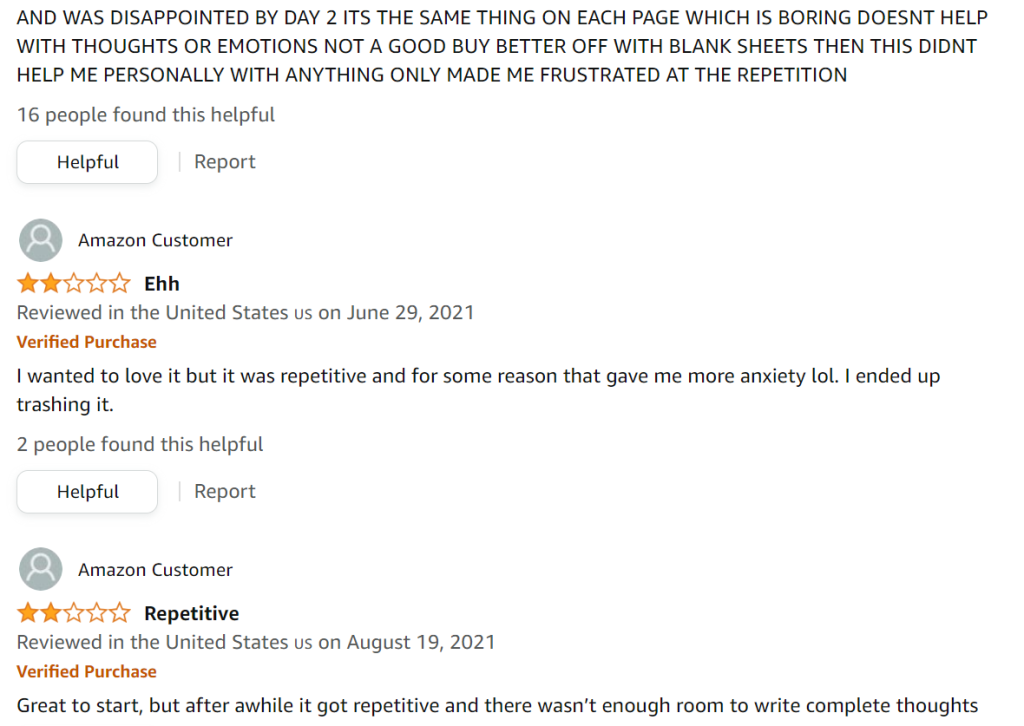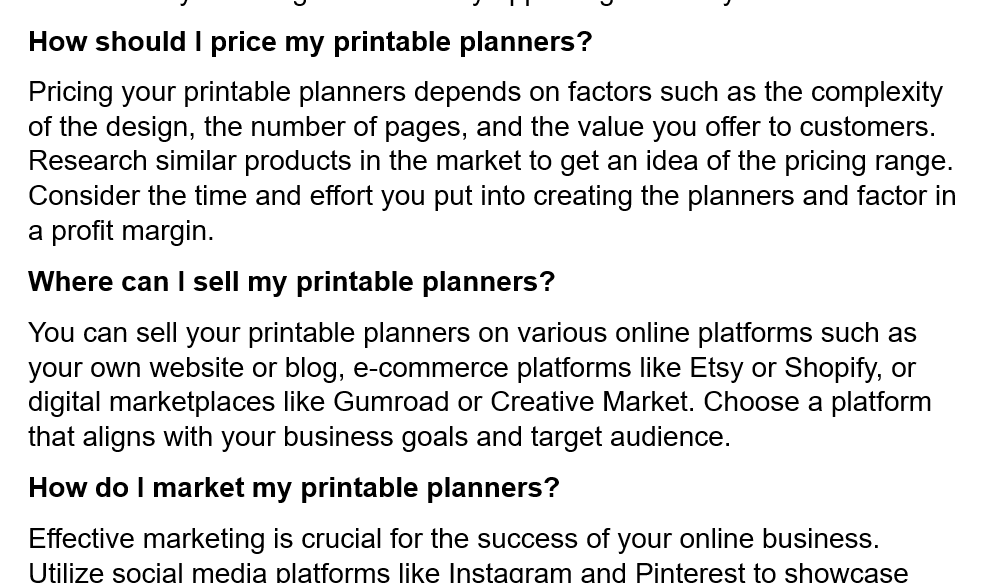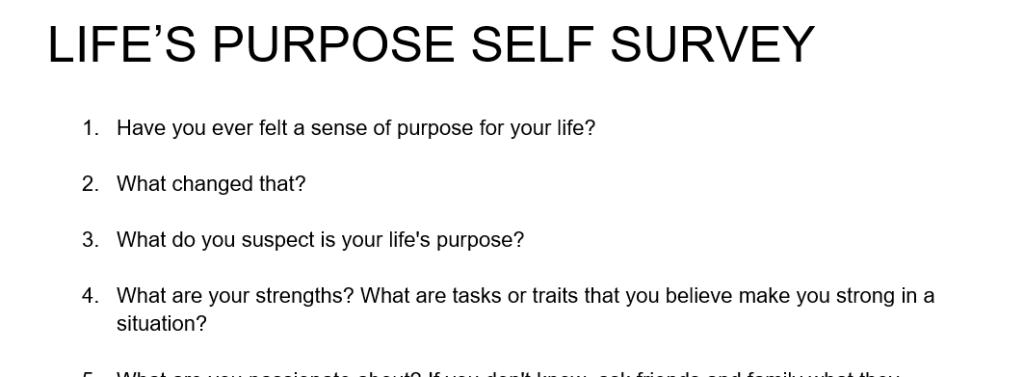Generating ideas and content for workbooks that resonates with your audience and provides value is essential for online business owners. However, coming up with fresh ideas and compelling content can be a challenge. But ideas are everywhere, you can start with a few words and get 100 ideas in just 10 minutes.

If you are struggling to find ideas to create workbooks, here are 5 ways. And if you are looking for PLR, check out Passion for PLR. Not only are the articles good, but a workbook is included in Canva, which gives you a head start on creating as well as “quizzes” on the topic which could generate more ideas. Gratitude Content Kit or Anxiety Content Kit.
1. Conduct Targeted Market Research:
To create a workbook that addresses the specific needs of your audience, you can conduct targeted market research. Start by identifying your target audience, including their demographics, interests, and pain points.
Use surveys, interviews, or online communities to gather insights and preferences directly from your potential customers. This research will help you understand the problems they face and the solutions they seek, providing a solid foundation for your content.
You can also conduct research on workbooks, journals and planners at places like Amazon. This is actually a great idea to find book reviews or in this case journal reviews to help you find more specific needs of your audience and even best sellers will have helpful comments.

Search for your keywords. I checked out Anxiety Journal and then viewed all the negative comments. All the reviewers said versions of the same thing: the prompts were the same every day and it became boring. The workbook was for 12 weeks and many thought the goals page should be at the beginning of the week, not the end. And the design of the book, writing on the left hand side of a bound book was difficult.
The positive reviews liked the design elements, found the 12 week layout fine to see the change over time and while the positive commenters also said the repetitive prompts were a problem, the prompt did ask them to consider their own mindset.
2. Leverage Social Media for Workbook Ideas:
Monitor social media platforms, industry-specific groups, and forums to gain insights into the conversations happening within your target audience. Pay attention to the questions they ask, the problems they discuss, and the topics that generate the most engagement.
You can post questions in groups, if allowed. First check the group rules to see what types of questions are allowed. Most do not allow promotion, so word your inquiries carefully. Or just be a lurker and see what others are discussing.
Use these questions and problems for content creation and is a great way to understand what your audience will be looking for. This information can serve as inspiration for creating content that directly addresses their concerns.
3. Address Frequently Asked Questions (FAQs):
Compile a list of frequently asked questions related to your niche or industry. Analyze the common challenges and uncertainties that your audience faces. Use these questions as a foundation for creating content that provides in-depth answers, step-by-step guidance, or practical solutions. By addressing their FAQs, you position yourself as a trusted resource and make your workbook highly relevant.
Here are some frequently asked questions by a new person interested in selling printable planners. It would include design, sizes to use, pricing, how to deliver the product and where to sell. I actually created a workbook using these prompts. This way the user can work through the steps with information there. And keeping in mind the comments about how difficult it is to write on the left side, I made sure any writing is on the right side of the workbook.

These might be FAQs (Frequently Asked Questions) by aspiring online business entrepreneurs who want to start selling printable planners. They would want to know how to create, how to price, how to market, etc. You could create a workbook for this audience to help them get started, or a series of workbooks for each of the questions
4. Conduct Keyword Research for Workbook Ideas:

Use keyword research tools to identify popular and relevant search terms related to your niche. You will want to use various tools to search for popular keyworks and related keyworks.
By understanding what people are actively searching for, you can create content that aligns with their interests and provides answers to their questions. Make a note of popular keywords to use for other subject matter workbooks. Incorporate these keywords strategically throughout your workbook to enhance its visibility and attract organic traffic.
5. Repurpose Existing Content for Workbook Content:
Look through your blog posts, articles, videos, or other content you’ve created in the past. Identify topics or concepts that can be repurposed and expanded upon in your workbook. Repackaging and adapting existing content allows you to leverage your expertise while providing additional value to your audience in a different format.
Repurposing PLR (Private Label Rights) content to create a workbook can be a time-saving and efficient way to develop valuable resources for your audience. You can use the PLR as a basis for a course or training and the workbook is just an element. You can create a new workbook for an online course or webinar that you host. Or use the workbook to support a public speaking event.
If you want some additional WAYS TO GENERATE ideas for content, check out this blog post: 7 WAYS TO GENERATE NEW CONTENT IDEAS.
Repurposing PLR
You could use the following steps for repurposing PLR content to create a workbook.
Step 1: The first step is to review the content you have selected and determine which parts can be used for the kind of book, journal or workbook you are creating. Don’t feel that you need to include every section, be selective
Step 2: Define the goals of your workbook and objectives you want to achieve. For example, it could be to develop a growth mindset, overcome limiting beliefs, or enhance personal growth and resilience.
Step 3: Divide the PLR content into sections or chapters that align with your workbook’s objectives. Each section should focus on a specific aspect. For example, if we are doing a workbook on cultivating a growth mindset, you may want to include sections such as self-awareness, embracing challenges, fostering resilience, or embracing lifelong learning.
Step 4: Design interactive worksheets and activities. Design activities that encourage self-reflection, promote critical thinking, and provide practical application of the concepts. .
Step 5:
Add visual elements: Incorporate visual elements to make your workbook visually appealing and engaging. Add relevant illustrations, charts, graphs, or infographics to illustrate key concepts and facilitate understanding. Use color schemes, fonts, and formatting to create a visually cohesive and professional-looking workbook.
Step 6: Include Progress Trackers and Assessments. Integrate progress trackers, checklists, or assessments to help users track their growth and evaluate their progress. Develop milestone checklists to celebrate achievements and provide a sense of accomplishment. Create self-assessment quizzes or questionnaires to gauge the readers’ understanding. This self survey is from “Find Your Life’s Purpose” by Passion For PLR

Step 7: Add a Call to Action and Additional Resources. Conclude the workbook by including a call to action that encourages readers to continue their growth mindset journey. Provide additional resources such as recommended books, websites, or online courses related to cultivating a growth mindset. This adds value and extends the learning experience beyond the workbook.
Need some PLR? I love these providers and am never disappointed. PIGGY MAKES BANK, EKITHUB, PASSION FOR PLR AND INTERNET SLAYERS.